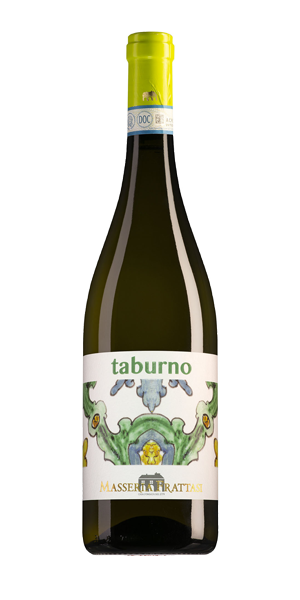Masseria Frattasi
Falanghina Taburno
Along with the red grape Aglianico, Falanghina is believed to be Campania’s oldest variety, reportedly of Greek origin and loved by the Romans. Falanghina is indeed thought by some to have been used to make the brownish wine Falernum, antiquity’s greatest and most appreciated wine. It is primarily cultivated in the Campania region of Southern Italy. Its name is thought to derive from the Latin word “falangae” (phalanx) which means stake or pole. The Romans probably referred to the Greek method of growing this grape by training the vines to poles.
Falanghina Beneventana has an interesting story, an ancient vine abandoned for a long time and confused with the equally famous Falanghina Flegrea and then rediscovered almost by chance in the seventies of the last century by wandering around the countryside. Recent profile DNA studies comfirmed at least two genetically distinct Falanghina varieties; the Falanghina Beneventana, which comes from the area around Benevento and the Falanghina Flegrea which is today wider planted than the Beneventana. They are often, but not always, grown together in the vineyards and then blended together, even though they ripen at different times. The Falanghina Beneventana, relaunched by Masseria Frattas, is usually more floral and structured than the Falanghina Flegrea perfectly suitable for aging in wood; the latter is generally fruitier but less complex. Both Falanghinas have excellent natural acidity and intriguing mineral notes.
The Falanghina Beneventana is thought to have originated in Bonea, a village on the foothill of the Monte Taburno (not far from the town of Benevento) that borders with the village of Montesarchio, home of Masseria Frattasi. They still grow in their vineyards two local biotypes of Falanghina – Falanghina di Bonea and Falanghina di Montesarchio – which survived the Phylloxera epidemic that in the late 19th century destroyed most of the vineyards for wine grapes in Europe. Falanghina grapes find their optimal environment on the slopes on the Mount Taburno and perform very well on volcanic soils.
Falanghina Taburno is made with 100% grapes of forty-five old Falanghina vineyard on clay and calcareous soil of volcanic origin between 300 and 480 meters above sea level. The vines are still managed using the old pruning system “a raggiera” quite popular at the end of the 19th century in Campania where vines are trained overhead on wires like the spokes of a wheel.
Altitude: 300 and 480 meters above sea level
Vine training technique: Raggiera
Age of vines: 45 year old
Soil: Clay, calcium deposits and volcanic
Soft pressing, cold maceration and temperature controlled fermentation. The wine matures for 3 months in stainless steel vats only.
Medium lemon-gold. Sweet, creamy nose with hints of vanilla; white peach, lychees and violet. Soft rich palate of grapefruit, lime, lychees and vanilla. It has minerality and high crisp acidity. Well-made and harmonious wine with charm and real balance.
Works well with all manner of seafood and rich fish dishes.
Vintage: 2021
Grape: 100% Falanghina
Region: Campania
Alcohol (ABV): 13%
